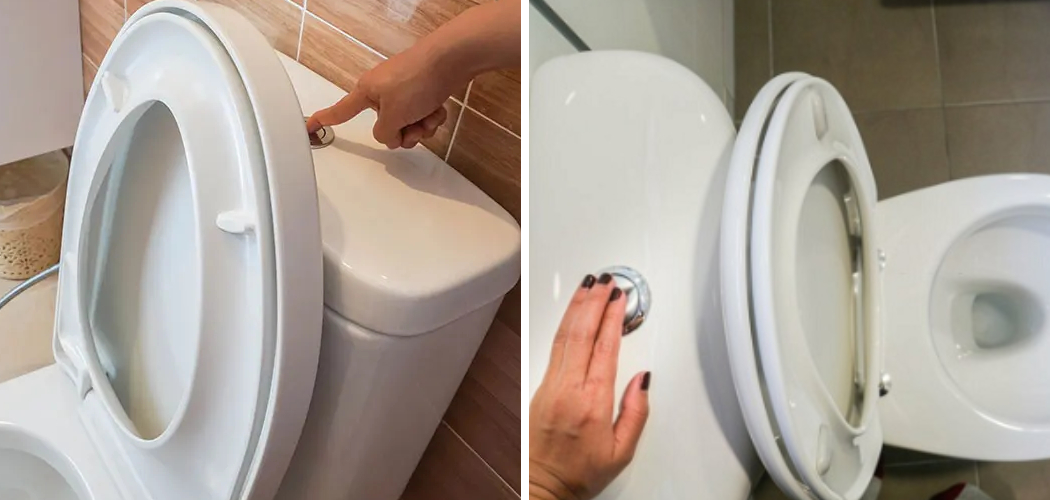Condensation on toilet surfaces is a common bathroom problem caused by the difference in temperature between the water inside the toilet tank and the surrounding air. This phenomenon, often seen as water droplets or a thin film of moisture on the toilet, can lead to water pooling around the base, creating a slip hazard and potential damage over time.
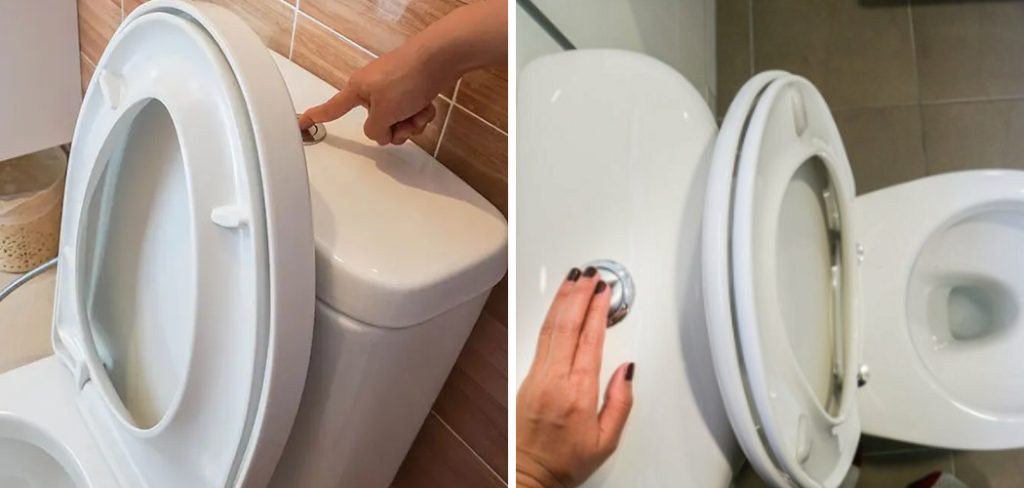
Addressing condensation is crucial for maintaining the structural integrity of your bathroom and ensuring a hygienic and comfortable environment. Unchecked moisture can foster the growth of mold and mildew, contributing to poor indoor air quality and health risks.
Learning how to stop condensation on toilet surfaces involves a mixture of immediate actions and long-term strategies. From improving ventilation and insulating toilet tanks to regular maintenance and the use of anti-condensation products, this guide will provide a comprehensive approach to effectively tackling and preventing condensation.
Identify the Causes of Condensation
Understanding the root causes of condensation is the first step in effectively addressing the problem. Three main factors contribute to condensation on toilet surfaces:
A. High Humidity Levels in the Bathroom
High humidity levels are a primary contributor to condensation. Bathrooms often have elevated humidity due to activities such as showering and bathing. When warm, moist air comes into contact with the cooler surface of the toilet tank, water vapor in the air condenses into liquid, forming droplets on the surface.
B. Temperature Differences Between the Toilet and Surrounding Air
The significant difference in temperature between the cold water inside the toilet tank and the warmer air in the bathroom creates an ideal condition for condensation. This temperature disparity becomes more pronounced during warmer months or in heated bathrooms during cold weather, increasing the likelihood of condensation.
C. Poor Ventilation and Air Circulation
Inadequate ventilation exacerbates the issue of condensation by allowing moist air to linger in the bathroom. Without proper air exchange, humidity levels remain high, and the moist air has more opportunities to condense on cooler surfaces. Poor ventilation also hinders the dispersal of warm air, which could otherwise mitigate the temperature differences contributing to condensation.
How to Stop Condensation on Toilet: Increase Bathroom Ventilation
Improving ventilation in a bathroom is a critical step in preventing condensation on toilet surfaces. Enhanced airflow helps lower humidity levels, reducing the chances of condensation forming.
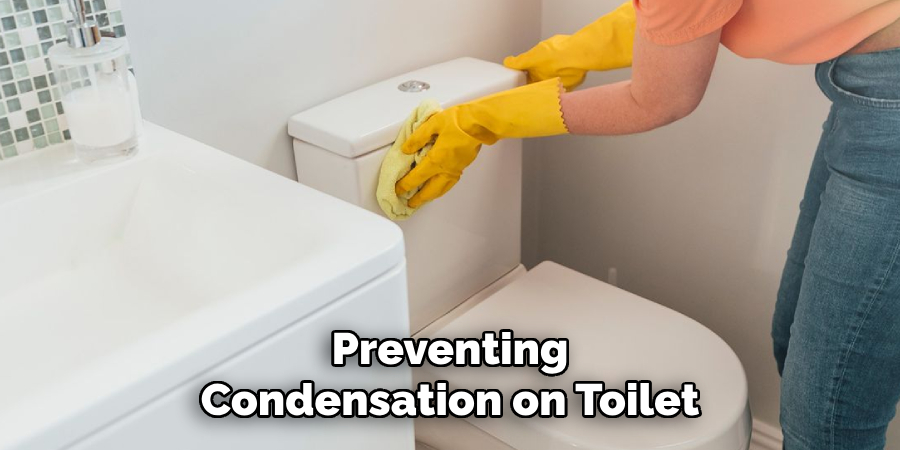
A. Install or Upgrade Exhaust Fans to Improve Airflow
Installing or upgrading exhaust fans is perhaps the most effective method for enhancing bathroom ventilation. A high-quality exhaust fan efficiently removes moist air from the environment and expels it outside, directly tackling the humidity contributing to condensation.
When selecting an exhaust fan, consider one with a sufficient capacity for your bathroom’s size; often, a fan’s effectiveness is measured in cubic feet per minute (CFM) of air it can move. Ensuring your fan is appropriately powerful for the volume of your bathroom will maximize its ability to combat humidity.
B. Keep Bathroom Doors and Windows Open When Possible
Another simple yet effective strategy is maintaining open doors and windows, especially after showering or bathing when humidity levels are at their highest. This practice encourages natural airflow and ventilation, helping to circulate the moist air out of the bathroom and draw in drier air from other parts of the home or directly from the outside. Obviously, privacy and weather conditions can influence how viable this option is at any given time.
C. Use Dehumidifiers to Reduce Humidity Levels
Employing a dehumidifier can be a valuable solution for bathrooms that consistently struggle with high humidity levels and where improved ventilation isn’t sufficient. Dehumidifiers extract moisture from the air, directly reducing the air’s humidity level.
This reduction in moisture minimizes the likelihood of condensation forming on the toilet and other surfaces. While dehumidifiers come in various sizes and capacities, choosing one that can adequately handle the volume of your bathroom is crucial for effective moisture control.
Implementing these strategies to increase bathroom ventilation helps prevent condensation on toilet surfaces and contributes to maintaining a more comfortable and healthier bathroom environment.
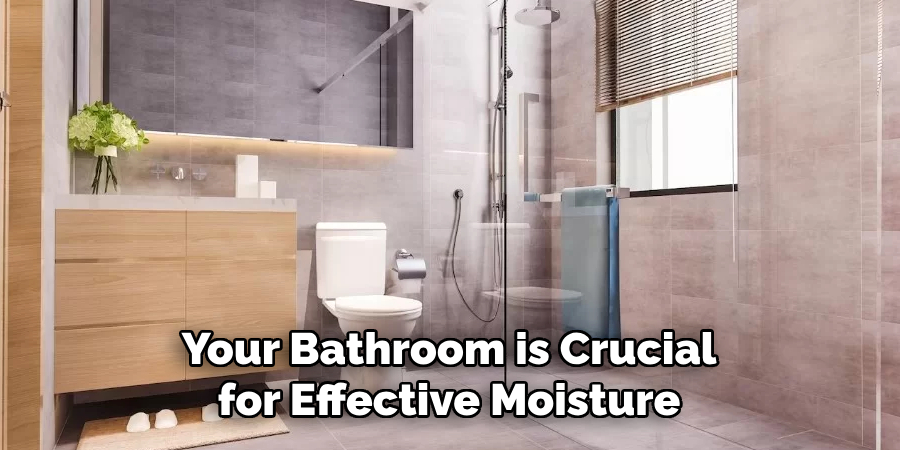
How to Stop Condensation on Toilet: Insulate Toilet Tank and Pipes
Insulating your toilet tank and pipes is a proactive approach to minimizing condensation by reducing the temperature variation between the water in the tank and the air in your bathroom.
A. Wrap Toilet Tank with Insulation Material to Reduce Temperature Variation
Wrapping your toilet tank with insulation material is an effective measure to combat condensation. Specialized insulation kits for toilet tanks are available for purchase; these kits usually consist of foam panels that can be cut to fit and adhered to the inside walls of the tank.
This foam acts as a barrier, reducing the cold surface area available for condensation and thus decreasing moisture accumulation on the outside of the tank. Installation is straightforward and can be a DIY project that provides immediate results in the fight against bathroom condensation.
B. Insulate Exposed Pipes to Prevent Temperature Differences
Just as the toilet tank can sweat due to temperature differences, so can the pipes that supply cold water to your toilet and other fixtures in your bathroom. Insulating these pipes is a prudent step to prevent condensation.
Pipe insulation, commonly available in foam tubes with a slit on one side for easy application, can be added to exposed pipes to keep them closer to the ambient temperature of your bathroom and reduce the chances of condensation forming.
C. Consider Using Foam Insulation or Pipe Wrap
Foam insulation or specifically designed pipe wrap are highly recommended when choosing insulation materials for your toilet tank or pipes. These materials are effective at reducing temperature variations, easy to install, and cost-efficient. Foam insulation for the tank and pipe wrap for the pipes can be cut to size, ensuring a snug fit that maximizes insulation coverage and effectiveness.
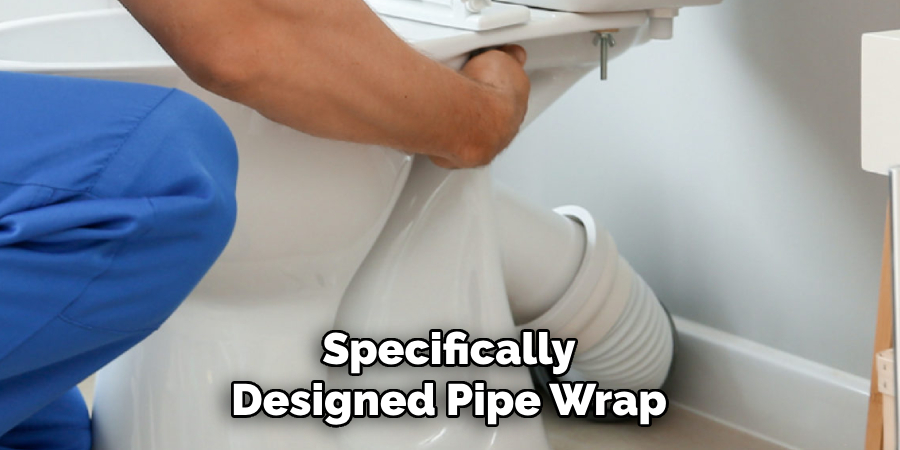
Adhering to these steps helps maintain a more consistent temperature in your bathroom fixtures, further protecting your space from unwanted condensation and the problems it brings.
How to Stop Condensation on Toilet: Utilize Anti-Condensation Products
Beyond enhancing ventilation and insulating toilet tanks and pipes, specific products are designed to combat bathroom condensation directly. These solutions can be especially useful in particularly troublesome areas or climates where humidity is a persistent issue.
A. Apply Anti-Condensation Coatings to Toilet Surfaces
Anti-condensation coatings can be applied to the external surfaces of toilet tanks and even pipes to prevent the formation of condensation. These coatings work by creating a barrier that minimizes temperature differences on the surface, effectively reducing the conditions that lead to moisture accumulation. Easy to apply, these coatings can be a convenient addition to your condensation prevention strategy.
B. Use Insulated Toilet Tanks or Toilet Tank Liners
Another innovative solution is to use toilets equipped with insulated tanks or to install toilet tank liners. Insulated tanks are designed to keep the water within at a temperature closer to that of the surrounding air, thereby drastically reducing condensation. Similarly, toilet tank liners function like insulation kits but are often made of more durable materials, offering a long-term solution to moisture concerns.
C. Install Thermal Barrier Films on Toilet Surfaces
Thermal barrier films can be applied similarly to anti-condensation coatings but are designed to specifically reflect heat, thereby maintaining a more uniform temperature on the toilet’s surface.
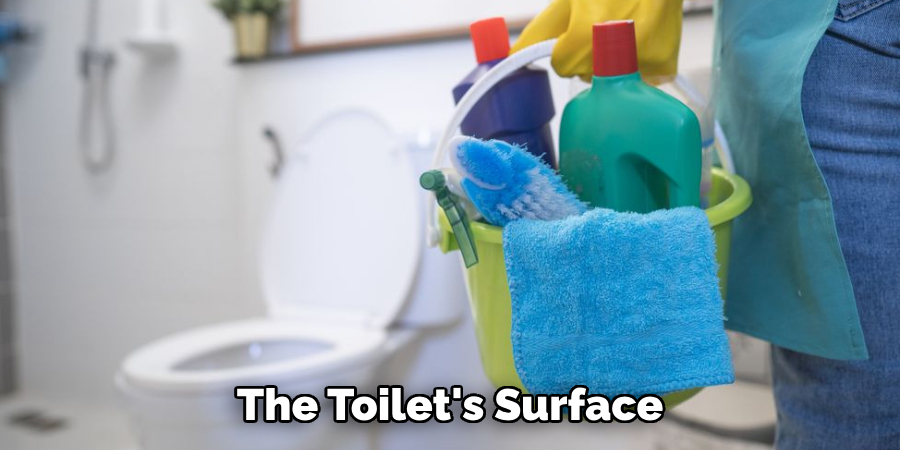
This technology helps to ensure that the outer surface of the toilet does not become excessively cold, reducing the likelihood of warm air condensing on it. Installation of thermal barrier films is straightforward and can be another effective tool in the fight against bathroom condensation.
Implementing these anti-condensation products provides additional protection against moisture buildup in bathrooms. Whether used independently or alongside other strategies, these solutions can significantly mitigate the negative effects of high humidity and condensation, preserving the integrity and comfort of your bathroom space.
Wipe Down Surfaces Regularly
Regularly wiping down bathroom surfaces is an essential, yet often overlooked, strategy in the battle against condensation. By promptly removing moisture from surfaces, you not only prevent condensation buildup but also discourage mold and mildew growth, which thrive in damp environments.
A. Use Absorbent Towels or Cloths to Wipe Away Moisture
Incorporate the use of highly absorbent towels or cloths into your daily bathroom routine. These can effectively soak up any residual water on walls, mirrors, and especially around the toilet area. Choose materials designed for high moisture absorption and quick drying for best results. This ensures that the cloth itself doesn’t become a breeding ground for mildew.
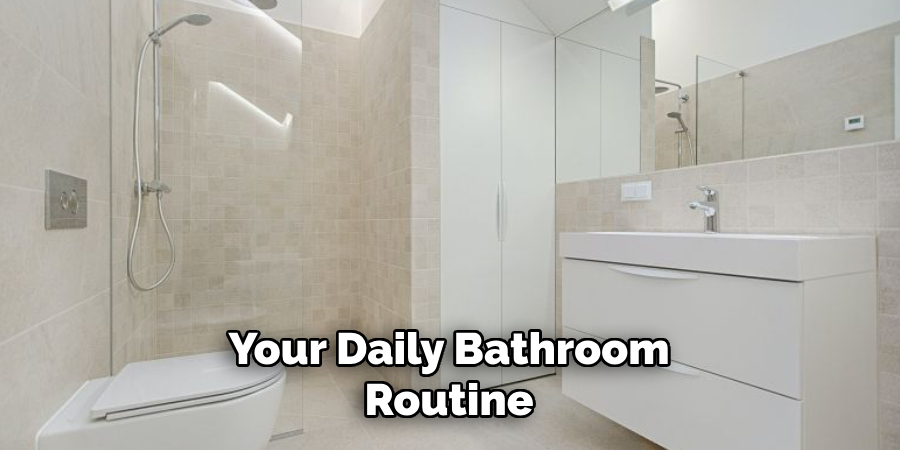
B. Keep Toilet Surfaces Dry After Each Use
To further mitigate condensation, ensure that the toilet and the area around it are kept dry after each use. This could involve wiping down the tank, lid, and base with a dry cloth or towel. Such practice not only aids in reducing condensation but also contributes to the overall hygiene of the bathroom.
C. Establish a Routine for Regular Cleaning and Maintenance
Consistent cleaning and maintenance of your bathroom are critical in controlling condensation. Set a schedule for deep cleaning of the bathroom at regular intervals, ensuring that hard-to-reach areas are not neglected.
This routine should encompass the cleaning of vents, the inspection of insulation, and the replacement of any absorbent materials used for wiping down surfaces. By establishing a habit of cleanliness and attentiveness, you can significantly diminish the occurrence of bathroom condensation and maintain a healthier environment.
Address Bathroom Humidity Sources
Managing the sources of humidity in your bathroom is integral to controlling condensation and ensuring the space remains comfortable and mold-free. By identifying and addressing common contributors to moisture, you can significantly reduce the potential for condensation and the subsequent issues it can cause.
A. Fix Leaks or Drips in Plumbing Fixtures
One of the primary sources of unnecessary humidity in bathrooms is leaking or dripping plumbing fixtures. Even slightly leaking faucets, showerheads, and toilet connections can contribute to higher levels of humidity.
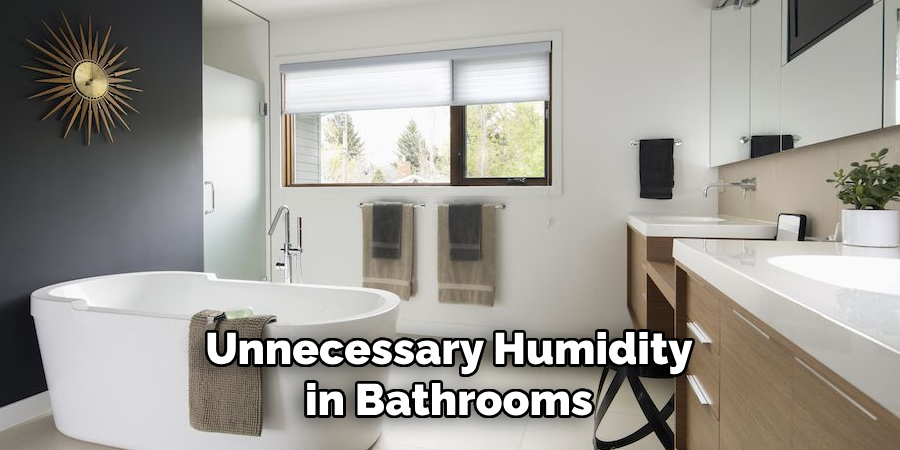
Regularly inspect your plumbing fixtures for signs of leaks or drips and repair them promptly. This not only helps reduce bathroom humidity but can also lead to water conservation and lower utility bills.
B. Dry Wet Towels and Bath Mats Promptly
Wet towels and bath mats can significantly contribute to bathroom humidity if left to dry in the space. Instead, hang them outside the bathroom to air dry or use a tumble dryer if possible. This practice helps keep the bathroom’s humidity levels in check and prevents the towels and mats from breeding grounds for mold and mildew.
C. Avoid Hanging Damp Clothes or Towels in the Bathroom
Hanging damp clothes or towels in the bathroom may be tempting, especially in smaller living spaces. However, doing so can raise the humidity level in the room, creating ideal conditions for condensation and mildew growth. Instead, opt for drying these items in well-ventilated areas or outdoors, if practical. This simple adjustment can significantly impact maintaining a drier and healthier bathroom environment.
Consider Heating Solutions
Incorporating heating solutions into your bathroom can greatly enhance comfort and further prevent condensation by maintaining a warmer, more consistent ambient temperature. Such measures can be especially beneficial during colder months, ensuring your bathroom remains cozy.
A. Install Radiant Floor Heating to Keep Bathroom Floors Warm
Radiant floor heating is an efficient way to evenly distribute warmth throughout your bathroom, starting from the ground up. This system works by heating the floor surface, radiating heat upwards, eliminating cold spots, and reducing the likelihood of surface condensation. Additionally, stepping onto a warm floor enhances comfort, making it an attractive feature for any bathroom.
B. Use Bathroom Space Heaters During Cold Weather
Consider using a bathroom-safe space heater for a more immediate and flexible heating solution. These portable heaters can quickly warm up the space, making early mornings more bearable and preventing condensation by balancing the room’s temperature. Ensure that the heater is specifically designed for bathroom use, adhering to safety standards to prevent any hazard from moisture interaction.
C. Upgrade to a Heated Toilet Seat
A heated toilet seat is a luxurious addition that brings unexpected comfort to your bathroom experience. Beyond the immediate benefit of warmth, a heated seat can help maintain a higher temperature around the toilet, contributing to reduced surface condensation. With adjustable temperature settings, this upgrade can be tailored to personal comfort levels and seasonal needs, adding a touch of indulgence to your daily routine.

Monitor and Adjust Room Temperature
Effectively managing the temperature within your bathroom is crucial for preventing condensation and maintaining a comfortable environment. Subtle adjustments and proactive monitoring can make a significant difference in the overall atmosphere and functionality of the space.
A. Maintain Moderate Temperature Levels in the Bathroom
Aim to keep your bathroom at a moderate, consistent temperature. This balance helps to avoid the cold surfaces that can cause condensation when they come into contact with warm, humid air. Ideally, maintaining a temperature around 68 to 72 degrees Fahrenheit (20 to 22 degrees Celsius) ensures comfort while minimizing the risk of condensation.
B. Avoid Drastic Temperature Fluctuations
Significant temperature variations between the bathroom and adjacent areas can lead to condensation problems. When the bathroom air is considerably warmer or cooler than in other parts of the home, it can cause moisture in the air to condense on surfaces when doors are opened or closed, contributing to dampness and potential mold growth. Aim for a gradual transition between the bathroom and other areas to mitigate this issue.
C. Use Programmable Thermostats to Regulate Heating
Installing a programmable thermostat is convenient for regulating the temperature in your bathroom and other areas of your home. This technology allows you to set temperatures for specific times of the day, ensuring the bathroom is warm when needed and conserving energy when not in use.
Some models even offer remote controls through smartphone apps, allowing settings to be adjusted from anywhere. This smart approach to heating helps maintain an ideal bathroom environment and can significantly reduce the likelihood of condensation and its associated problems.
Regular Maintenance and Inspection
Keeping your bathroom in optimal condition requires regular maintenance and inspection to prevent issues such as condensation, mold, and mildew from arising.
A. Check for Signs of Condensation Regularly
Periodic checks for signs of condensation should be an integral part of your bathroom maintenance routine. Look for water droplets on walls, ceilings, pipes, and windows, especially after showers or baths. Early detection of condensation can help you take timely actions to adjust ventilation or heating to mitigate the issue.
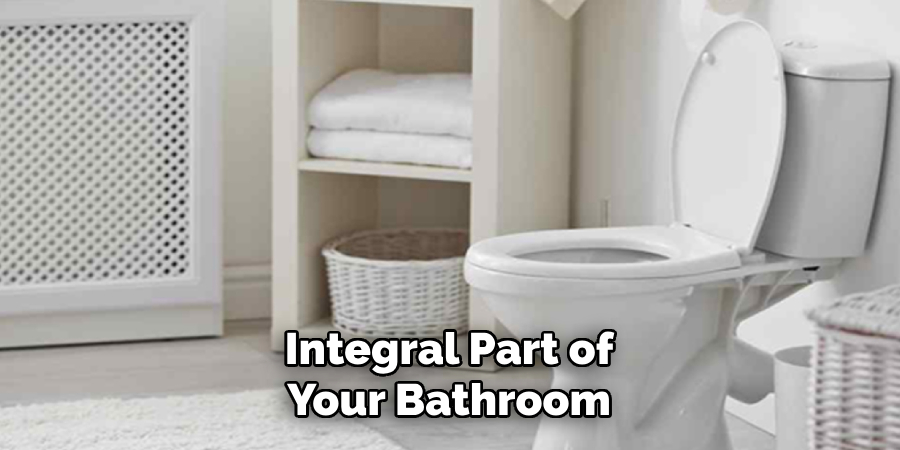
B. Address Any Issues Promptly to Prevent Mold and Mildew Growth
Upon detecting any signs of condensation, mold, or mildew, it’s essential to address them without delay. Cleaning affected areas with appropriate cleaning agents can prevent the spread of mold and mildew.
Improving ventilation or adjusting the room’s temperature might be necessary for persistent issues. Timely intervention can safeguard against potential health risks and damage to your bathroom’s fixtures and surfaces.
C. Schedule Professional Inspections if Necessary
In some cases, particularly where there’s recurrent condensation, mold, or mildew despite your best efforts, it may be worthwhile to schedule a professional inspection. Experts can assess your bathroom’s ventilation, heating, and insulation, providing solutions that might not be immediately apparent. They can also identify potential trouble spots you might overlook, ensuring your bathroom remains a healthy and comfortable space.
Regular maintenance and vigilant inspection are key to maintaining a condensation-free bathroom. Adopting a proactive stance towards potential issues can help ensure your bathroom remains a pleasant, mold-free environment, enhancing the overall quality of your living space.
Conclusion
We’ve explored various strategies to mitigate the discomfort and potential damage caused by bathroom condensation. Key methods include utilizing radiant floor heating, incorporating bathroom space heaters during colder seasons, and upgrading to heated toilet seats. These solutions not only enhance comfort but also play a crucial role in how to stop condensation on toilet surfaces by maintaining a balanced and consistent indoor environment.
Consistent maintenance and proactive monitoring are fundamental in preventing the occurrence of condensation, mold, and mildew. Regular checks for signs of moisture, coupled with immediate corrective action, are essential in maintaining a healthy bathroom environment. The use of programmable thermostats for efficient temperature regulation and scheduling professional inspections when necessary further support these efforts.
With the right practices and a commitment to ongoing maintenance, achieving a comfortable and condensation-free bathroom is entirely feasible. By implementing the discussed strategies and maintaining vigilance over your bathroom’s environmental conditions, you’ll create a space that’s not only free of condensation but also welcoming and warm. Here’s to enjoying a healthier, more comfortable bathroom environment for years to come.

